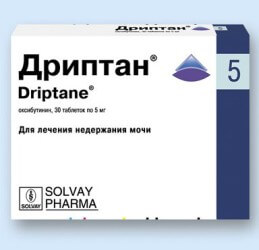Overactive bladder in women: symptoms and treatment
An overactive bladder (OAB) is a combination of symptoms caused by spontaneous contraction of the bladder muscles when urine accumulates. These signs include:
- desire to empty the bladder at night;
- uncontrollable urges, which can lead to urinary incontinence.
There are two types of hyperactivity: idiopathic (without a clear cause), occurring in approximately 65% of patients, and neurogenic (caused by diseases of the nervous system, and so on), observed in approximately 24% of patients. Urologists also distinguish a form in which all of the listed symptoms occur in the absence of hyperactivity of the bladder muscle itself (detrusor), which accounts for 11% of all cases of OAB. The latter form occurs in women much more often than in men.
Prevalence
Approximately one in five adults on Earth has the disease. Women suffer somewhat more often than men, especially with some forms of the disease. OAB occurs in 16% of women in Russia. However, the myth that OAB is a disease exclusively of women is associated with a much rarer appeal of men to a doctor about this. The greatest number of patients falls ill at the age of about 40 years, and over the next 20 years, the incidence among the female population is higher. Among patients over the age of 60, the number of men is gradually increasing.
The incidence of this disease is comparable to morbidity or depression, that is, it is a fairly widespread chronic disease. A feature of the disease is that even in the United States of America, 70% of patients for some reason do not receive treatment.
This is largely due to the embarrassment of patients and poor awareness of the possibility of treating this disease. Therefore, patients adapt by changing their usual way of life, while its quality is significantly reduced. It becomes impossible to travel long distances or even a simple shopping trip or excursion. Night sleep is disturbed. Patients are less likely to meet with relatives and friends. Their work in a team is disrupted. All this leads to a violation of the social adaptation of patients with OAB, making this disease a significant medical and social problem.
It should be noted the low awareness of not only patients, but also doctors in matters related to the causes, manifestations, diagnosis and treatment of the disease.
The reasons
As the name suggests, idiopathic hyperactivity has an unexplained cause. It is believed that damage to the nerve endings responsible for the functioning of the bladder muscle, as well as changes in the structure of this muscle, are involved in its development. In places where the innervation of the muscle is disturbed, there is an increased excitability of muscle cells adjacent to each other. At the same time, the reflex contraction of the muscle cell, provoked by the expansion of the bladder during its filling, is transmitted like a chain reaction along the entire wall of the organ. This theory, which explains the development of hyperactivity by an excessive contractile response of cells during denervation (lack of normal nervous regulation), is generally accepted.
Factors contributing to the development of OAB:
- female;
- old age (60 years or more);
- irritable bowel syndrome;
- depression, emotional instability, chronic nervous tension.
The predisposition of women to the development of the disease is due, as experts today believe, to a lower level of serotonin in their brain. It is further reduced during any hormonal changes, making the woman more likely to fall prey to the disease initially.
In elderly patients, the tendency to the appearance of OAB is due to a decrease in the elasticity of the bladder muscle and its ischemia, that is, insufficient blood supply. These factors lead to the death of muscle cells and damage to the nerves responsible for the correct rhythm of urination. This also starts a chain reaction of muscle cells associated with denervation of the bladder muscle.
Another provoking factor, characteristic mainly for women, is the inflammatory processes of the genitourinary tract.
Neurogenic hyperactivity occurs in people of both sexes with the same frequency. It is caused by damage to the pathways that conduct nerve impulses through the spinal cord and the overlying nerve centers. At the same time, the brain affected as a result of the disease gives signals for emptying when the bladder is not full, causing the classic OAB clinic. Neurogenic hyperactivity occurs with brain tumors, severe, Parkinson's disease, injuries and and the spinal cord.
External manifestations
There are three main symptoms of OAB:
- urination more than 8 times a day (of which more than once at night);
- urgent (urgent), sudden and very strong urges at least twice a day;
- urinary incontinence.
The most persistent symptom is frequent urination, which sometimes makes patients completely unable to work and leads to rash decisions with dire consequences.
Urinary incontinence is more rare, but it is even more difficult to tolerate. Within three years, in about a third of patients, this symptom either disappears on its own without treatment, then reappears.
Diagnostics

Complaints, the history of life and illness of the patient are studied. The patient is asked to keep a urinary diary for at least three days. It will be a great time saver if the patient gets to the initial appointment with the urologist with an already filled diary.
The diary should record the time of urination and the amount of urine excreted. Very useful additional information:
- the presence of imperative (“ordering”) urges;
- episodes of incontinence;
- the use of special gaskets and their number;
- the amount of fluid you drink per day.
When collecting an anamnesis, special attention is paid to neurological and gynecological diseases, as well as diabetes mellitus. Be sure to clarify information about childbirth and surgical interventions on the muscles of the perineum.
A vaginal examination and a cough test are performed (during such an examination, the woman is asked to cough). Conduct an ultrasound examination of the uterus, kidneys, bladder. They take a urine sample and do a culture to check for infection. The patient should be examined by a neurologist and given a detailed conclusion.
Urodynamic studies were previously considered an integral part of the diagnosis. But they provided useful information in only half of the patients with OAB. Therefore, today a comprehensive urodynamic study (KUDI) is prescribed in the following cases:
- difficulty in making a diagnosis;
- mixed type of urinary incontinence;
- previous operations on the pelvic organs;
- concomitant diseases of the nervous system;
- treatment failure;
- planning potentially difficult treatment, such as surgery;
- suspected neurogenic hyperactivity.
If neurogenic hyperactivity is suspected, the neurologist should also prescribe the following examinations:
- study of somatosensory evoked potentials;
- magnetic resonance or computed tomography of the brain and spine.
Treatment
OAB therapy is not well developed. This is due to the diverse clinical picture and the individuality of manifestations. In addition, the drugs used are often ineffective and toxic.
The main directions of treatment:
- non-drug;
- medicinal;
- surgical.
Behavioral therapy is used both on its own and in combination with medication. It lies in the patient's habit of controlling his bladder, treating him like a naughty child who must be carefully monitored. It is necessary to urinate at regular intervals during the day, increasing them more and more. Such training is especially useful for weakened urges and incontinence.
At a young age, Kegel exercises are recommended. Many women have known them since childbirth, when they used them to train their pelvic floor muscles. These techniques will also train the muscles around the urethra.
Behavioral therapy and physical therapy have practically no contraindications, they are harmless and free, which allows them to be recommended to the vast majority of patients.
Surgical treatment includes the following operations:
- denervation of the bladder (cessation of transmission of impulses that cause detrusor contraction);
- detrusor myectomy, which reduces the area of the overreactive muscle surface;
- intestinal plastic, in which part of the bladder wall is replaced by an intestinal wall that is not capable of imperative contractions.
Such operations are complex and are carried out only according to individual indications.
 Effective drug
Effective drug The basis for the treatment of patients with OAB is drugs. Of these, anticholinergics are the leading ones. Their action is based on the suppression of muscarinic receptors responsible for the contraction of the bladder muscle. Blockade of receptors causes a decrease in muscle activity, OAB symptoms decrease or disappear.
One of the very first drugs in this group is oxybutynin (Driptan), developed in the middle of the last century. It is quite effective, but has a number of adverse effects: dry mouth, blurred vision, constipation, palpitations, drowsiness and others. Such adverse events led to the search for new forms of drug administration: transrectal, intravesical, transdermal. A slow-release form has also been developed which, for the same efficacy, is markedly better tolerated and taken once a day. Unfortunately, it is not yet registered in Russia.
Trospium chloride is also widely used. In terms of effectiveness, it is close to oxybutynin, but is better tolerated. Its efficacy and safety are clinically proven.
Specially designed for the treatment of OAB tolterodine. In terms of effectiveness, it is comparable to the first two means, but is much better tolerated. The drug has been well studied. Its optimal dosage is 2 mg twice a day. There is also a slowly released form of the drug, which is much less likely to cause dry mouth. This form can be used in a large dosage, which allows you to completely get rid of the symptoms of the disease.
Tolterodine has the following contraindications:
- urinary retention (more common in men);
- untreated angle-closure glaucoma;
- myasthenia gravis;
- ulcerative colitis in the acute stage;
- megacolon (intestinal enlargement).
In all other patients, all symptoms are significantly reduced after 5 days of admission.
The maximum effect is shown in 5 8 weeks of reception. However, to maintain it, you must constantly take these drugs. Their cancellation will lead to a relapse of the disease.
Another possible effect after the use of any anticholinergic drugs, including tolterodine, is a violation of bladder contractility. There is an incomplete emptying of it, which can cause permanent urinary retention in the ureters and renal pelvis with subsequent development. Therefore, if there is a feeling of incomplete emptying of the bladder, patients receiving these drugs should immediately consult a doctor. When observing such patients, the volume of residual urine (not released during urination) should be measured using ultrasound monthly.
Alternative treatment regimens are also being developed. For example, with neurogenic detrusor overactivity and the ineffectiveness of conventional drugs, capsaicin and resiniferotoxin solutions are prescribed into the bladder, making the bladder receptors unable to send signals to the brain about the need for urgent emptying.
There is a practice of using botulinum toxin, which is injected into the bladder muscle, which causes its temporary paralysis and decreased activity. The effect of this procedure is from 3 to 12 months, it is increasingly used by doctors.
Which doctor to contact
If you experience frequent urination, uncontrolled urges, urinary incontinence, you should consult a urologist. Additional consultation with a neurologist, gynecologist, endocrinologist may be required. In many cases, a comprehensive urodynamic study is prescribed to help in the diagnosis.




